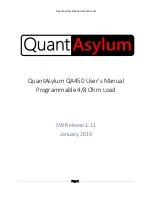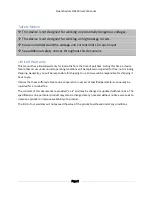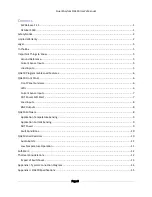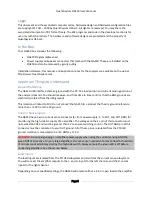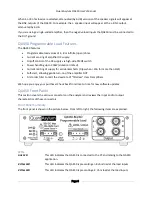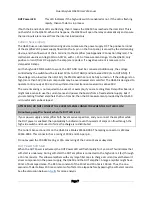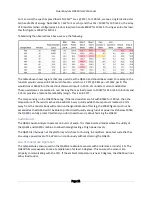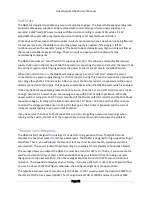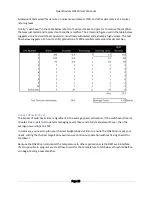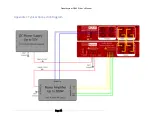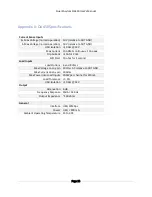
QuantAsylum QA450 User’s Manual
Page 10
Fault Conditions
If absolute current exceeds 15A for more than 2 milliseconds, the high-side PMOS will be disabled. A
fault will be reported on the QA450 application and the USB power must be removed and re-applied to
clear the fault and restore normal operation.
If the DUT GROUND wire is lost due to broken lead or disconnect, then you will lose the ability to turn
the DUT POWER on, and it will revert to OFF if currently ON. The DUT POWER LED will still appear
functional, however.
QA450 Load Resistors
The QA450 uses a special type of load resistor called a “Pulse Withstanding” load resistor. These are
specially formulated resistors built on metal substrates designed to handle extremely large pulses of
power for very short periods of time. They are non-inductive.
An example resistor used for the QA450 is the Bourns PWR163 series. The QA450 has 16 of these
resistors
—
8 per channel. When presenting an 8 ohm load, four 2 ohm resistors per channel are used
(4S1P). When presenting a 4 ohm load, eight 2 ohm resistors per channel are used (4S2P). There are half
as many resistors used when presenting an 8 ohm load versus a 4 ohm load. This has implications for
maximum power handling.
The PWR163 resistors are each rated to handle 25W when the case temperature is 25C. That 25W figure
is de-rated by about 15% as the backplate temperature reaches 50C. If the resistors are near room
temperature and the QA450 is configured for 4 ohms (8 resistors), then you can hit the load with 8 * 25
= 200W for several seconds until the thermal protection kicks in. The temperature will quickly rise over
several seconds and further de-rating will be necessary as it increases. When the resistor temperature
exceeds 60C, the QA450 will self-protect and disconnect the loads.
The PWR163 spec also shows the pulse power rating, reproduced here:

